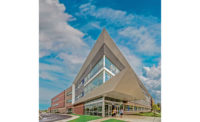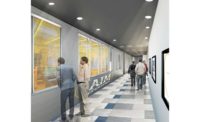City Grill
 Dan Duprey
Dan Duprey
President & COO
CPL
“The city of Rochester, particularly downtown, has experienced a renaissance over the past several years,” Duprey says.“Two positive trends in the Flower City have been private developer driven projects, including design-build delivery and the adaptive reuse and repurposing of buildings.” He says the Rochester Downtown Development Corp. is tracking nearly $746 million in current activity.
Duprey notes a few reasons for these trends. “Some of the private development is being spurred by state programs like Empire State Development initiatives, but others are a product of confidence in the local and national economy.” he says. “We are seeing development and construction both on the residential and commercial side,” particularly corporate headquarters in the form of new builds.
Meanwhile, the Rochester Regional Health system has “commissioned numerous reuse health care projects that shift outpatient services away from the main hospitals,” Duprey says.
The system opened the RRH Riedman Health Center last year, which CPL designed to be housed in a former Tops supermarket building.
These trends “translate to opportunities for AEC firms,” Duprey says, even if they bring challenges like balancing staff and investing in technology.

RENDERING COURTESY SWBR
Firm in Focus
SWBR
387 E. Main St., Rochester, N.Y.
President: Thomas R. Gears
Employees: 101
Founded: 1969
Class Act: SWBR is transforming the Brighton Central School District’s Council Rock Primary School from a 1950s C building into a 21st-century learning facility. The $25-million renovation and addition will provide new classrooms to support the district’s first full-day kindergarten and additional capacity for grades 1 and 2. Construction of the 14-classroom addition to the rear and south of the building will make it possible to abandon the original utilities and to subdivide the new underground utilities into town- and school-owned lines. One of the most challenging issues was fitting the new chilled beam piping units between the existing low-slope acoustic roof deck and the new ACT ceiling. Using BIM technology, the mechanical systems were laid out and adjusted within the model instead of during the construction phase.






Post a comment to this article
Report Abusive Comment